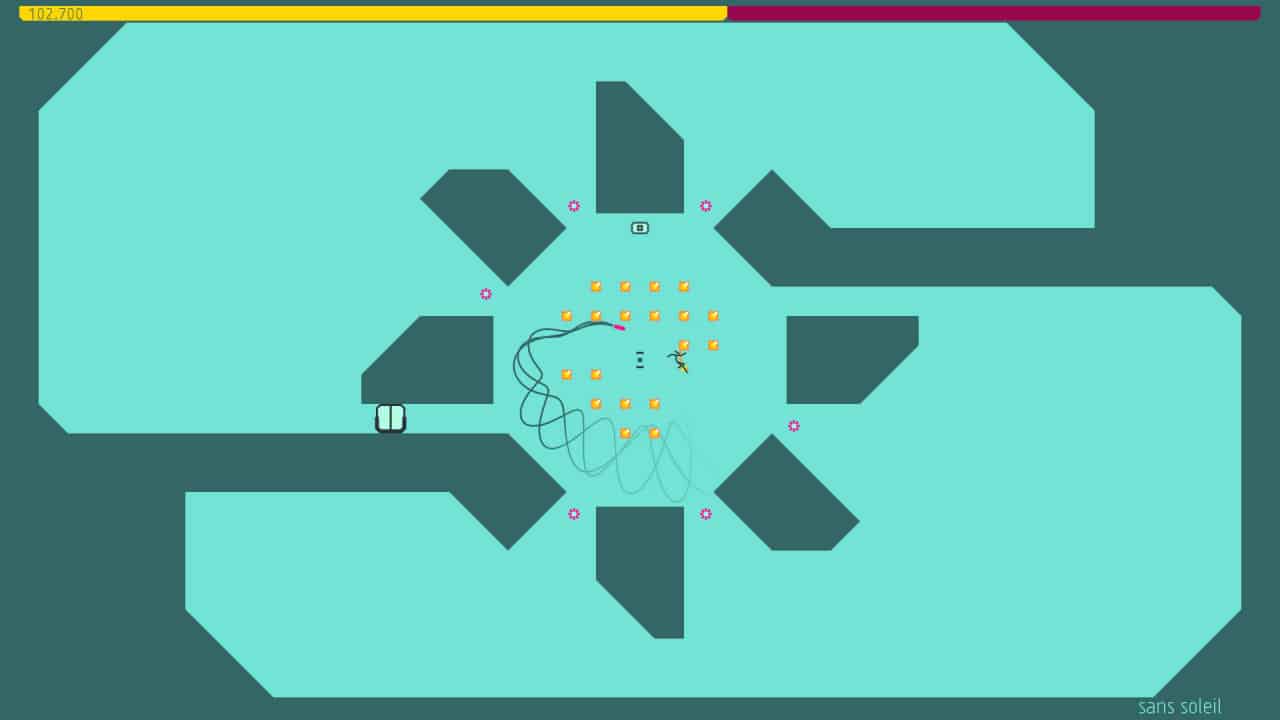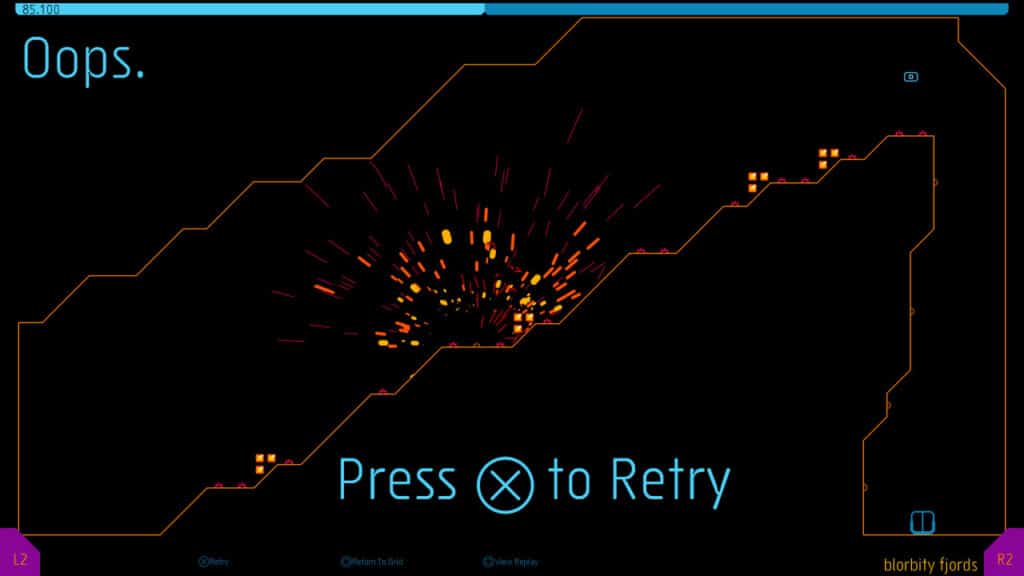Looking solely at the specifics on paper, Toronto-based Metanet Games’ newest PS4 release, N++, isn’t a title you would describe as simple. The game, which includes 2,360 levels, 50+ color schemes, 6+ hours of original electronic music, and a built-in level editor with global level-sharing, allows for quite the opposite impression to arise. Though minimal in design aesthetic, the game, which is front-loaded with a considerable amount of content, already appears to be daunting.
In spite of this, the uniqueness of N++ lies not within its massive content library, but within the game’s mechanics (or ‘methods invoked by agents for interacting with the game world’). A staple strength of minimalist design, the ideas of simplicity (streamlining the number of possible interactions within a game system) and depth (the number of different, meaningful experiences that can emerge from said interactions) are the core goals of the design mechanics present within N++. The manner in which the player can engage with the game, operating through a small set of interesting, consequential choices is what truly makes the experience of N++ satisfying.
Following a ten year development period, which ended with its commercial launch on July 28th, N++ has come into public view in a peculiar fashion (CBC News, The Washington Post). Particular attention is being paid to the positive critical reception despite lack of recent commercial success. Most reviewers are attributing this to Metanet’s lack of aggressive marketing, while others are ascribing it to N++’s overall presentation. Sure, the game is packed with content and is still growing, thanks to its active community, but it only appears this busy on paper.
Visually, N++ is simple, which throw a few people off at first glance. This percentage may dismiss N++ as an over-hyped, cheap-looking Flash game that somehow made its way onto the PS4; a platform of which it isn’t worthy of and ultimately, does not belong on. The assumed argument here is one that has somehow become dogmatic for commercial success amongst game developers and reviewers alike: “build more stuff, make more things, bombard your players with THE BEST THAT MODERN DAY TECHNOLOGY CAN CREATE. That’s what makes a great game.”
This dismissal of anything that doesn’t result in a technology-heavy user experience is an act that has quietly gained acceptance. Sure, there was a time when videogame minimalism was a technological necessity rather than an artistic choice, but that should not be a game’s only major qualifier. Instead, I’d like to look at what a game like N++ does for our understanding of game design, and how elements of simplistic design can allow for depth to emerge in a game experience.

The game’s premise is simple: Players control a stick-figure character who must run, jump, and slide past traps and obstacles to reach a door at the end of the level. Activate the door switch and reach the door before time runs out, and you move on to the next level. It sounds fairly straight-forward. So, what could a simple run and jump platformer have to offer in terms of depth within play experience? The answer is seen within the mechanics themselves.
Jumping and moving around the game’s expansive number of levels is more than just a press of a button or the touch of the D-pad. What players soon realize is that how you precisely move is dependent upon the subtlest change in control manipulation. If you press the jump button with more force, your character will jump higher in direct connection to effort that you have exerted. Similarly, noticing that you can jump farther by picking up speed and then jumping is an insight that, while obvious on the surface, is one that surprisingly advanced for a platforming game’s execution.
N++’s understanding of gravity, momentum, and velocity is what affords the game not only its difficulty, but also its magic. Through a limited set of finely-tuned mechanics, the ability to jump and move, come the innumerable emergent properties of the game world and its sophisticated interpretation of movement. It’s a system that allows for its players to experiment with the variability of their impact on various environments in the game; one that encourages and thrives on failing and trying again. It is from this give and take, this nudging of a system’s capabilities and learning how to use these features intuitively without discouraging player progress, that players begin to truly engage with a game.
It is from this seemingly simple set of mechanics that we truly see the depth of possible experiences that N++ can offer.
So What?
An often tricky equilibrium to strike, N++’s execution of streamlining its options of choice while still providing a vast range of possible experiences to emerge is one that merits praise. In its genre alone, it embodies an admirable design goal: perfect your representation of movement and offer a challenge. However, this is just in respect to movement.
With a similar framework in mind, in what ways could the designing ideas of simplicity and depth do for genres that involve strategy, role playing, or even sand-box style exploration and building? In what ways have we already seen this, and how could we imagine these principles being utilized further? Are they even worthy of what makes a great game?
Questions to consider as we move forward to design more games and rewarding play experiences.
Comment below and let us know about what you think! Check back in next month for a new installment of “A Study in Design” and, as always, stay with us at Analog Addiction for all of your gaming news!




